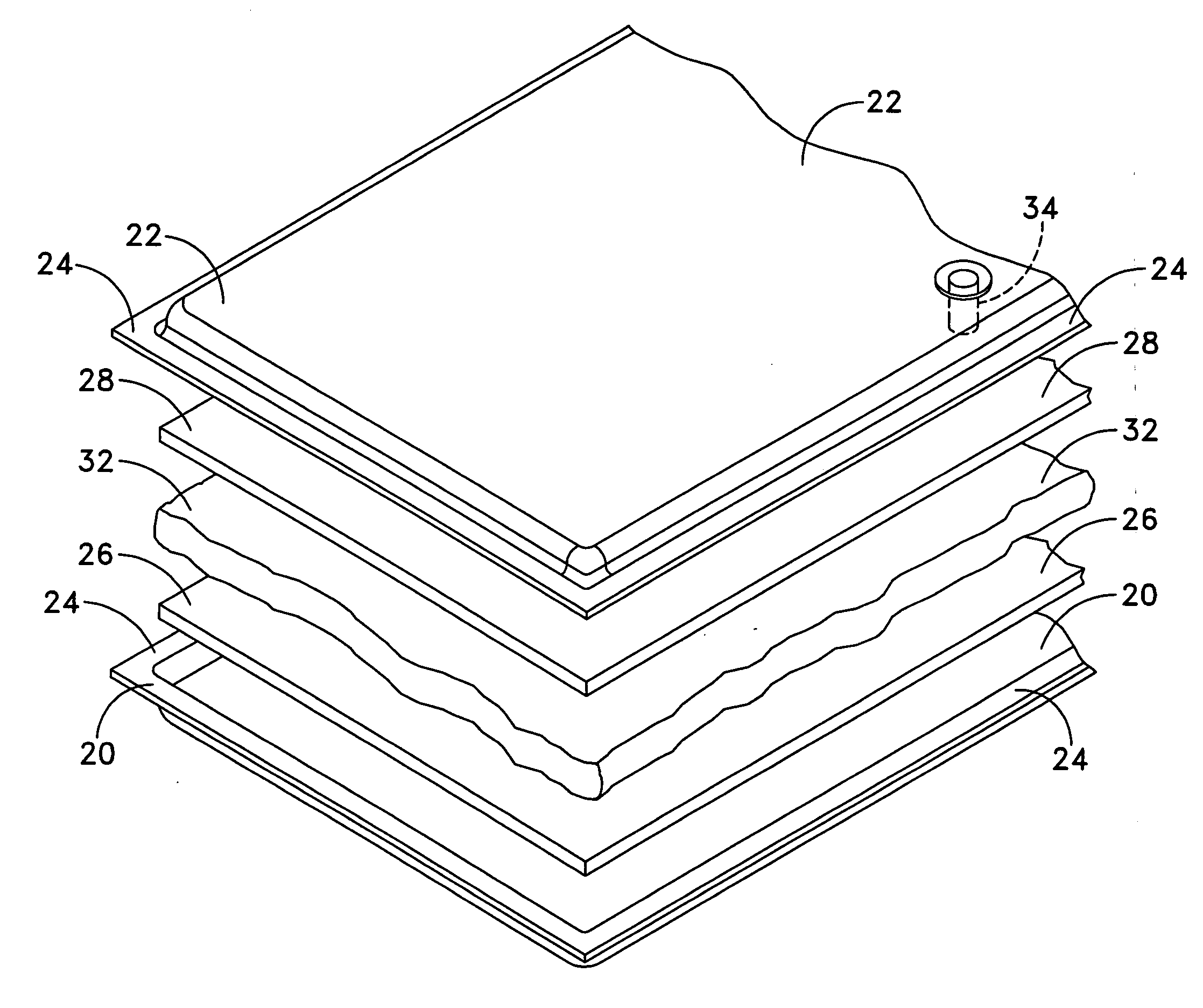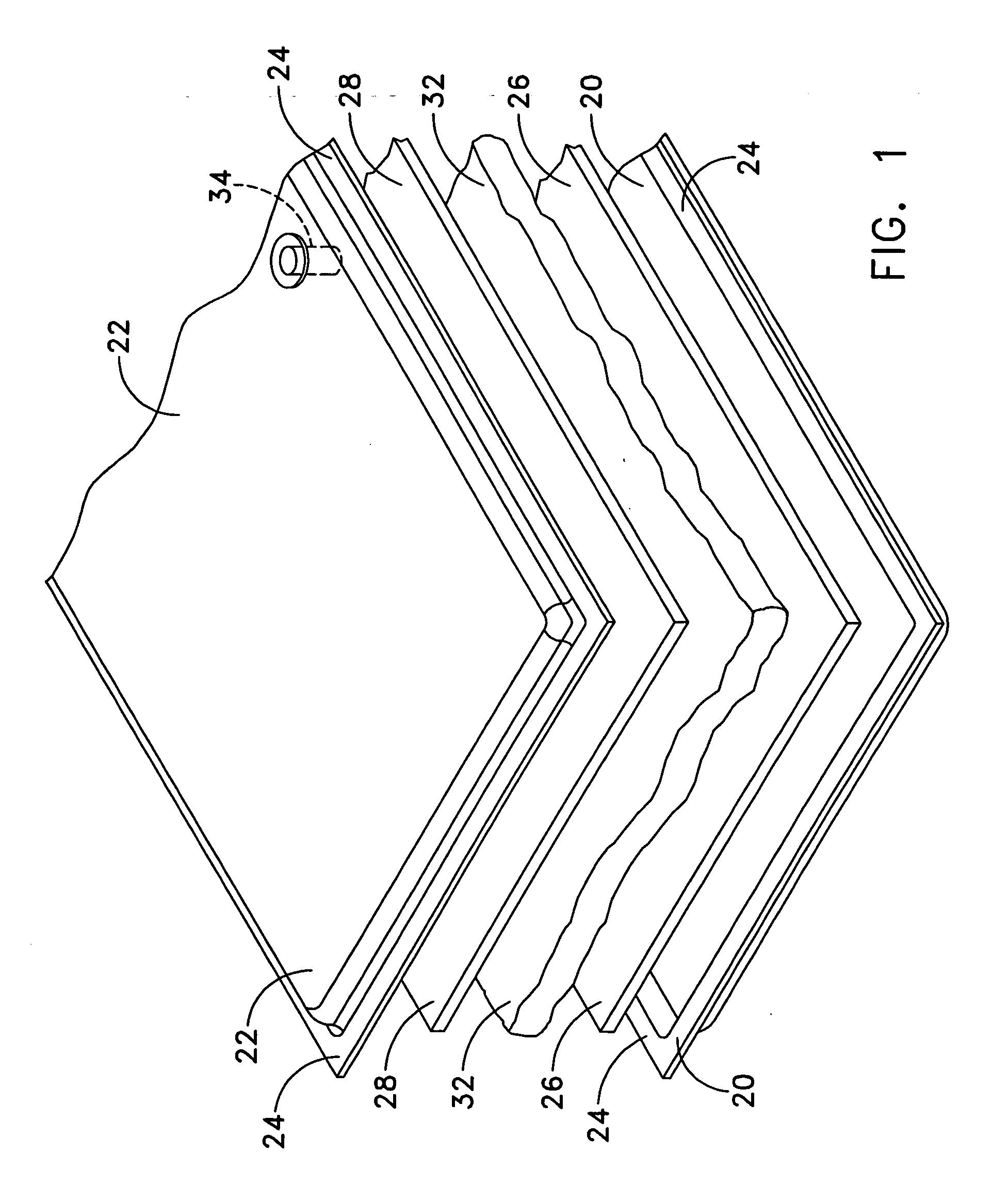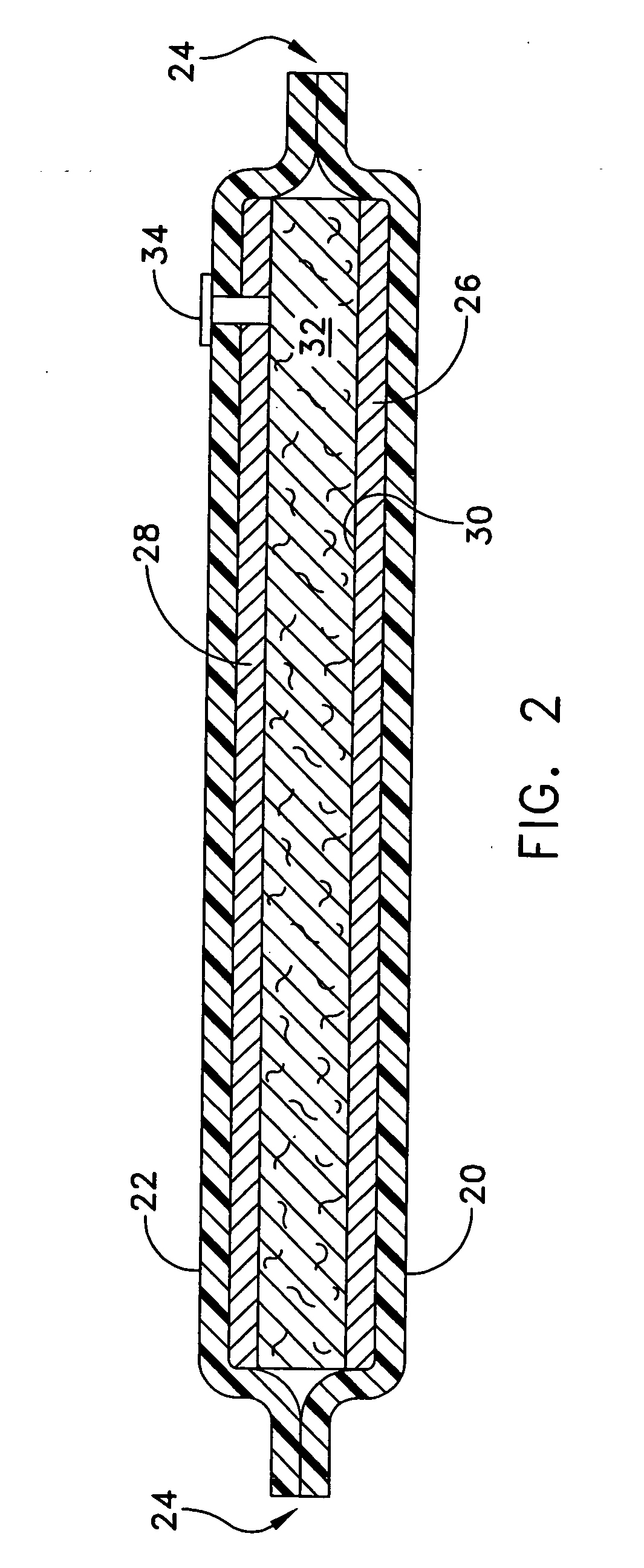Thermal barrier fabric
a fabric and thermal barrier technology, applied in the direction of synthetic resin layered products, protective garments, packaging, etc., can solve the problems of garments that are difficult to work, garments are typically extremely bulky and heavy, and neither of the above approaches is suitable for cold water exposur
- Summary
- Abstract
- Description
- Claims
- Application Information
AI Technical Summary
Benefits of technology
Problems solved by technology
Method used
Image
Examples
Embodiment Construction
[0022]Referring to the drawings, it will be seen that an illustrative fabric for conservation of body heat of a wearer includes an inner impermeable material layer 20 and an outer impermeable material layer 22. The inner and outer material layers 20, 22 are preferably of a polymer material, a fusible silicon, or other impermeable material coated with an adhesive in the areas 24 in which the inner and outer material layers are joined to each other. Alternatively, the inner and outer layers 20, 22 may be of a woven, knit or non-woven cloth material coated with a polymer material or a fusible silicone to render the inner and outer layers impermeable.
[0023]The inner and outer layers 20, 22 are bound to each other in a stitchless manner in the areas 24, as by fusion, heat sealing, ultrasonic sealing, laser sealing, adhesive sealing, or the like. The cloth inner and outer layers 20, 22 are preferred for non-water environments.
[0024]Adjacent at least one of the impermeable material layers ...
PUM
| Property | Measurement | Unit |
|---|---|---|
| thickness | aaaaa | aaaaa |
| volume | aaaaa | aaaaa |
| impermeable | aaaaa | aaaaa |
Abstract
Description
Claims
Application Information
 Login to View More
Login to View More - R&D
- Intellectual Property
- Life Sciences
- Materials
- Tech Scout
- Unparalleled Data Quality
- Higher Quality Content
- 60% Fewer Hallucinations
Browse by: Latest US Patents, China's latest patents, Technical Efficacy Thesaurus, Application Domain, Technology Topic, Popular Technical Reports.
© 2025 PatSnap. All rights reserved.Legal|Privacy policy|Modern Slavery Act Transparency Statement|Sitemap|About US| Contact US: help@patsnap.com



